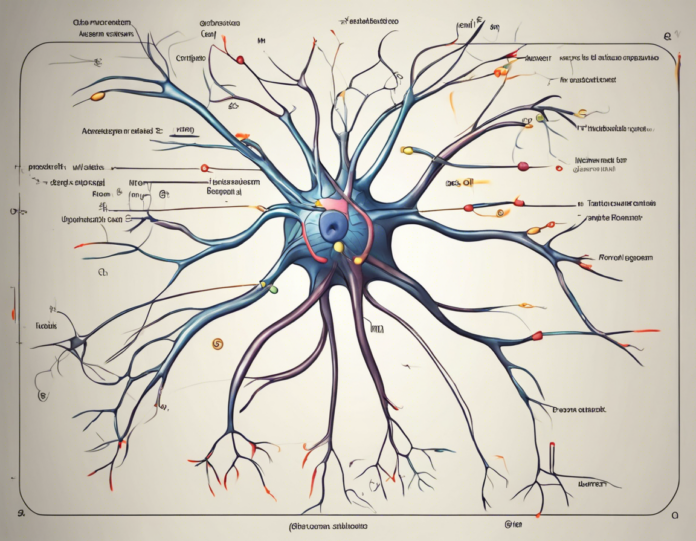The human brain is a complex network of billions of nerve cells called neurons. Neurons are the basic building blocks of the nervous system and play a crucial role in transmitting information throughout the body. To understand how neurons work, it is important to delve into the structure and function of these specialized cells. In this article, we will explore the anatomy of a neuron in detail, including its different parts and their respective functions.
Structure of a Neuron
A typical neuron consists of several key components that work together to transmit electrical and chemical signals. These components include:
1. Cell Body (Soma)
The cell body, also known as the soma, is the main part of the neuron that contains the nucleus and other organelles essential for the cell’s survival. The soma integrates information from dendrites and transmits signals down the axon.
2. Dendrites
Dendrites are branch-like structures that extend from the cell body and receive signals from other neurons or sensory receptors. These incoming signals are transmitted as electrical impulses towards the cell body.
3. Axon
The axon is a long, slender projection that carries electrical impulses away from the cell body to other neurons, muscles, or glands. Some neurons have a myelin sheath—a fatty insulating layer that speeds up signal transmission.
4. Axon Terminals
At the end of the axon, there are small branches called axon terminals that release neurotransmitters—chemical messengers that transmit signals to other neurons or target cells.
Function of a Neuron
Neurons communicate with each other through a process called neurotransmission. When a neuron is activated, an electrical signal is generated and travels down the axon. This signal triggers the release of neurotransmitters from the axon terminals, which then bind to receptors on the dendrites of neighboring neurons.
This process allows for the transmission of information throughout the nervous system and is essential for various functions, including sensory perception, motor control, cognition, and emotion regulation.
Types of Neurons
There are several types of neurons in the nervous system, each with a specific function:
-
Sensory Neurons: These neurons carry sensory information from sensory receptors to the central nervous system.
-
Motor Neurons: Motor neurons transmit signals from the central nervous system to muscles or glands, resulting in movement or secretion.
-
Interneurons: Interneurons act as intermediaries between sensory and motor neurons, integrating and processing information within the central nervous system.
Importance of Neurons
Neurons are fundamental to the functioning of the nervous system and are responsible for processing and transmitting information essential for various physiological and cognitive processes. Understanding the structure and function of neurons is crucial for advancing our knowledge of brain function, neural disorders, and potential treatment strategies.
Frequently Asked Questions (FAQs)
1. What is the role of neurotransmitters in neuron communication?
Neurotransmitters are chemical messengers that transmit signals between neurons. They bind to specific receptors on the dendrites of neighboring neurons, influencing whether an electrical signal is generated.
2. How do neurons generate electrical signals?
Neurons generate electrical signals through a process called action potential. When a neuron is stimulated, sodium ions rush into the cell, reversing its electrical charge and creating a wave of depolarization down the axon.
3. Can neurons regenerate if damaged?
In general, neurons have limited regenerative capacity. However, some studies suggest that under certain conditions, neurons may be able to regenerate to some extent, especially in the peripheral nervous system.
4. What role do glial cells play in supporting neurons?
Glial cells are non-neuronal cells that provide support and protection for neurons. They help maintain the neuron’s environment, insulate axons, and aid in the repair of neural tissue.
5. How does synaptic plasticity contribute to learning and memory?
Synaptic plasticity refers to the ability of synapses to strengthen or weaken over time in response to activity. This process is believed to underlie learning and memory formation by altering the strength of connections between neurons.
In conclusion, neurons are remarkable cells with intricate structures and vital functions that enable the transmission of information within the nervous system. Studying the anatomy and physiology of neurons is essential for unraveling the complexities of the brain and developing treatments for neurological disorders.









